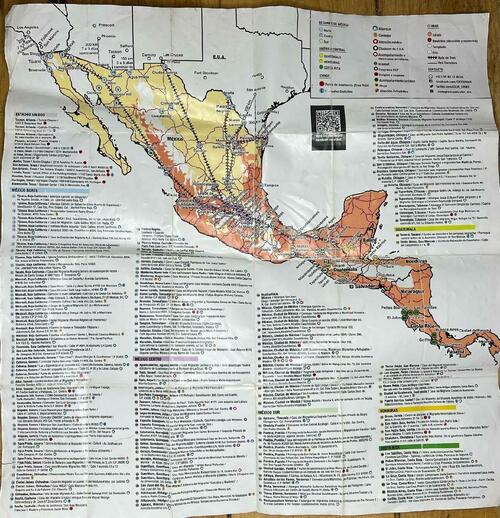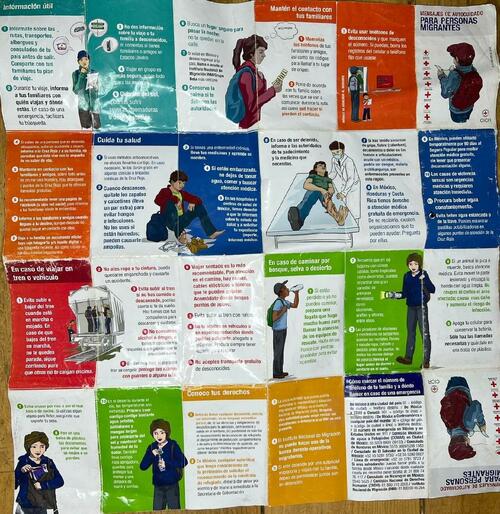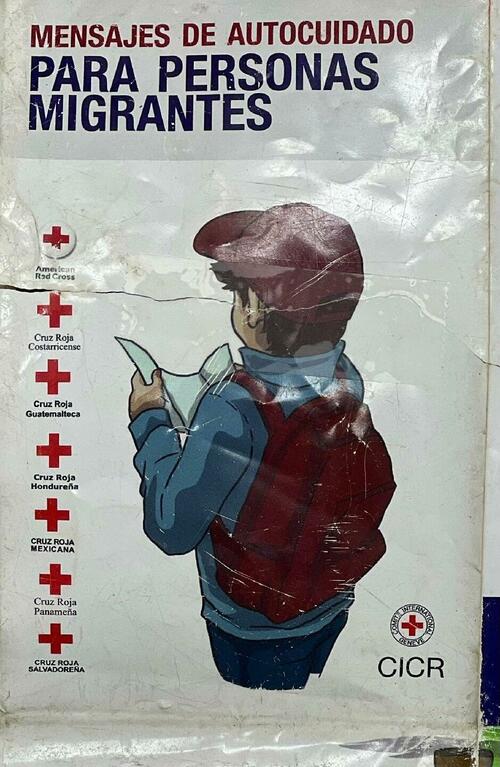(ZH) The American Red Cross has been providing maps and guides to help migrants to illegally cross into the United States from Mexico, according to documents obtained by the Daily Caller.
The map, which bears American and international Red Cross logos, shows where migrants can find various resources, including hotels, medical care and shelters along their route through Central America and Mexico. The guide also provides tips on surviving in the desert, dealing with disease, how to safely jump on trains and how to obtain contraceptives.

As the Caller notes, the American Red Cross sits on the board of the Federal Emergency Management Agency’s (FEMA) Food and Shelter Program, and is responsible for allocating funds to NGO groups which support illegal migrants.
The FEMA program received $350 million from the Department of Homeland Security (DHS) in February; the American Red Cross is tasked, along with other NGOs, with allocating some of those funds to support migrants after they’ve crossed the southern border and are processed with a court date.
The organization is not only facilitating help for illegal migrants in the U.S., but appears to be helping migrants make their journeys far south of the border. U.S. Customs and Border Protection (CBP) has recorded a record surge in illegal migration at the southern border, where federal authorities encountered more than 2.3 million migrants in fiscal year 2022 and more than 870,000 between October and January. -Daily Caller
“If you use contraceptives methods, don’t forget to bring them with you. In necessary cases, some Red Cross’ clinics and medical brigades will give them to you for free,” reads the self care document.

Also included are tips for jumping on top of cargo trains, such as “La Bestia,” or “the beast,” which takes them north through Mexico.
“Traveling seated (on trains) is the most recommended. Be careful on your trip, there are branches, electric cables, tunnels that can hit you. Accommodate yourself where you have supporting points,” reads the guide.

“In the desert during the day, temperatures are extreme. Seek to bring with you lots of potable water, pants and long sleeves to protect you from the sun and maintain the sweat humidity. Also take with you warm clothes, gloves to protect your hands and a flashlight and matches,” the pamphlet continues.
When reached for comment, the International Committee of the Red Cross called the effort “strictly humanitarian.”
“We provide information about ways to reduce risk and where to find lifesaving assistance in Mexico and Central America. It is essential to prevent the loss of lives and to promote a humanitarian approach. Addressing the needs of this vulnerable population is a shared responsibility, of the authorities in the countries of origin, transit and destination, and of the international community.”
This article originally appeared on Zero Hedge.
Related posts:
Views: 0
 RSS Feed
RSS Feed

















 March 15th, 2023
March 15th, 2023  Awake Goy
Awake Goy 
 Posted in
Posted in  Tags:
Tags: 
















